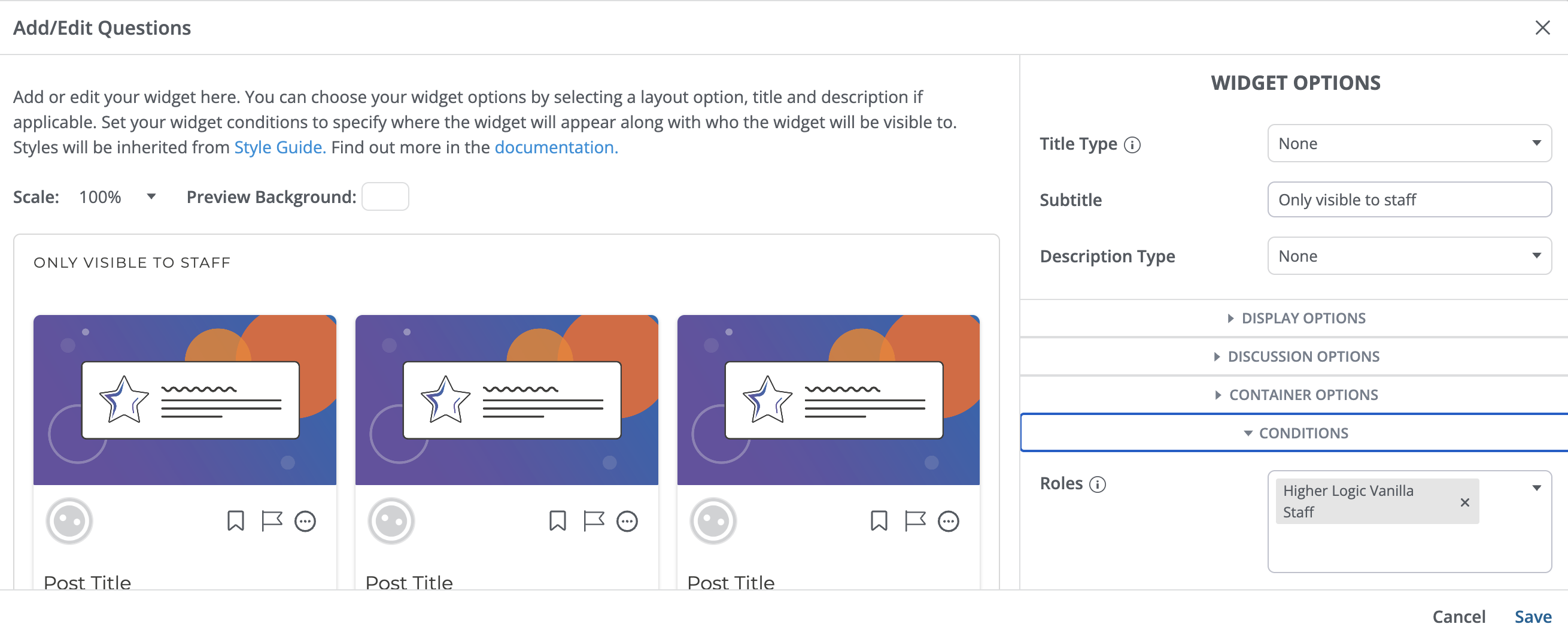Best Of
#TipTuesday: A Warm Spot in a Frosty Season: How Heat Maps Help Your Landing Page Shine
When you build a landing page for your community, you’re making your best guess about what members need most, kind of like bundling up before stepping outside. You think you know what will keep everyone warm and engaged, but you won’t really know until you see how people move through the space.
That’s where heat maps bring the glow.
Tools like Hotjar give you a cozy, color-coded look at how members actually interact with your landing page. Instead of guessing in the winter fog, you get a clear view of where members click, scroll, hover, and freeze. With this insight, you can quickly tell whether your page is guiding people toward the content that matters most.
What Heat Maps Can Reveal
A heat map can help you discover:
- Hot spots where members naturally gravitate
- Cold zones where content is being ignored or buried
- Scroll depth, so you know whether key resources are “above the snowline”
- Frosty friction points, like clicks on elements that aren’t actually clickable
It’s like giving your landing page its own weather forecast and you get to control the climate.
Why This Matters in Vanilla Communities
Your landing page is the front door of your community. The digital equivalent of walking into a warm lodge after being out in the cold. If members quickly find what they need, they’re more likely to explore, participate, and settle in. But if the layout isn’t aligned with what they’re looking for, their experience can feel more like slipping on ice.
Heat maps help you answer questions like:
- Are members seeing the resources we spotlight?
- Should we move key elements higher to avoid the “frozen tundra” no one scrolls to?
- Which areas spark engagement and which leave people out in the cold?
With just a few insights, you can make adjustments that melt barriers and warm up engagement.
A Simple First Step
If you’ve never used a heat map before, here’s an easy way to dip your toes in (no snow boots required):
- Install a tool like Hotjar on your landing page.
- Let it run for 1–2 weeks to gather activity.
- Review the hot and cold zones.
- Make a few small layout adjustments.
- Re-run the heat map to watch engagement warm up.
It’s a quick, low-effort way to keep your community homepage feeling inviting, even in the chilliest months.
Re: How do you manage dozens of product forums, groups, teams, and initiatives?
Hi @marygreencnyinfor - thank you for your question! I'm sure that some of the amazing community managers here will have some great insights but I wanted to share some ideas based on our experience.
Scaling community across 50+ products is an exciting challenge — and one we’re seeing more organizations encounter as community becomes a strategic part of the customer experience. There’s no single “right” model, but the companies that do this well tend to share a few common practices:
1. Build a Centralized Framework — Then Localize It
Instead of treating each product community as a one-off, create a consistent, scalable framework that all product areas can follow. This usually includes:
- Standardized community guidelines and moderation practices
- A repeatable onboarding and launch process for new spaces
- Clear expectations for product teams (e.g., ownership, SME participation, cadence of updates)
- Shared templates for FAQs, announcements, and recurring content
This keeps quality high while still letting each product customize discussions, naming, and engagement strategies for their audience.
2. Organize Around Themes, Not Just Product Lines
With 50+ products, you’ll likely have overlap in user needs, workflows, and use cases. Many companies find success by grouping spaces into:
- Solution categories
- Audience roles (admin, developer, end-user, partner)
- Lifecycle stages (onboarding, advanced usage)
This helps prevent a sprawling, fragmented experience and encourages cross-product learning.
3. Create a Cross-Functional “Community Council”
At scale, community stops being “owned” by one team — it becomes a shared initiative. Mature organizations create a structure that:
- Includes representatives from each major product line
- Establishes communication loops with product, CX, support, and marketing
- Aligns community priorities with company-level initiatives
- Ensures each team understands their role in maintaining active, healthy spaces
This spreads ownership and prevents community from becoming a bottleneck.
💡 Use tools like Automation Rules to escalate posts to the appropriate team members without adding to your workload.
4. Invest in Strong Internal Enablement
Your internal teams need to know how to participate effectively. Common enablement resources include:
- Playbooks for responding in community vs. support channels
- Best-practice training for product SMEs
- Quarterly office hours for community contributors
- Role-based guidance on when and how to post
Companies that scale well treat internal enablement like an ongoing program, not a one-time initiative.
💡 Create a staff only Category or KB where you can collect SOPs and answer any internal questions.
💡 Use a Question widget to highlight an unanswered posts for your staff to help with:
5. Let Data Drive Your Scaling Plan
When you’re managing dozens of spaces, data helps you decide where to focus. Consider tracking:
- Engagement trends (active members, posts, answers)
- Time to first response / time to accepted answer
- Search topics with no good results
- Which spaces attract contributors without additional prompting
This helps you identify which communities should be expanded, consolidated, or redesigned.
6. Phase Your Growth Intentionally
Even if you’re past the “bite-sized” stage, you don’t need to launch everything at once. Many successful orgs scale like this:
- Start with your highest-impact product groups.
- Launch core community structures (Q&A, discussions, knowledge areas).
- Establish ownership with product and other internal teams.
- Collect insights and apply the playbook to the next set of products.
This phased approach ensures consistency without overwhelming internal teams.
7. Plan for Ongoing Governance
Finally, long-term success comes from visibility and governance. Companies that manage scale well often:
- Publish quarterly community health reports
- Revisit structure annually to consolidate or expand spaces
- Maintain product lifecycle flags (e.g., “sunset,” “legacy,” “new release”)
- Keep a centralized inventory of all community spaces and owners
This ensures everything stays aligned as products evolve.
I hope this helps, please let us know if you would like more details for any areas!
📣 Season of Sharing starting next week!
Hey Vanilla friends!
As we head into the final month of the year, we’re excited to celebrate with a little extra cheer — and a lot of extra knowledge. This December, we’re launching our Season of Sharing, a month-long initiative to help you get even more value, ideas, and best practices from your community platform.
⭐ What to Expect
Throughout December, we’ll be doubling up on our Tip Tuesday posts! That means two tips every week — double the insights, double the inspiration, and double the opportunities to level up your community management skills.
Whether you’re looking to streamline your workflows, enhance member engagement, or discover hidden features in Vanilla, our expanded Tip Tuesday lineup will have something for everyone.
🎄 Why the Season of Sharing?
This is our way of saying a small thank you for being part of the Vanilla Success Community. Your questions, ideas, and participation make this space vibrant and valuable all year round. We hope this month gives you a little something extra as you plan for a strong start to 2026.
🎉 Join the Celebration
We’d love for you to join in the Season of Sharing, too! As you read along with this month’s tips, we encourage you to add your own best practices, shortcuts, creative workflows, or “hidden gem” features that others might find helpful.
After all, some of the most powerful insights come straight from fellow community builders. Let’s make December a month where we learn from—and elevate—each other.
Wishing you all a wonderful December and a joyful Season of Sharing!
Re: Retrieving group member request comments
Yes! 🙂
As long as you haven't approved/rejected the user yet, you could use the API to get all of the requests and the text along with it. I do this currently with one of our groups.
The URL would look like this:
https://YOUR-URL.com/api/v2/groups/groupnumber/applicants.csv?page=1&limit=100
- Replace the "YOUR-URL" with your Community URL
- Replace the "groupnumber" with the number that appears in the URL after "group/" when you click on the group.
This will download a CSV file with up to 100 group access requests and their "Reason".
That said, once they've been Approved or Rejected I'm not sure there's any way to see this information anymore. I hope this helps!
Genevieve
💡 #TipTuesday: Engage in one click with Reactions
Reactions turn quiet readers into active participants with one click to say “this helped,” “insightful,” or “🎉 awesome!” Without even typing a reply, members can elevate the best content, guide others to answers, and fuel your engagement flywheel.
Why use Reactions
Think of Reactions as your community’s high‑five. They lower the barrier to engagement so more people participate with one tap for even the lurkers.
They also help the community self‑curate: high‑scoring posts surface on Best Of, so newcomers find the good stuff faster. Posts will rack up views, leading to becoming the canonical answer the next time the question pops up. That’s Reactions quietly doing heavy lifting in the background.
And because Reactions can award points, they plug right into your badges and long‑term recognition strategy for contributors.
Best‑practice setup
- Keep it simple: enable 1–4 clear Reactions so the choice is fast and consistent. Decision fatigue is real.
- Encourage positive signals (Like, Insightful, Celebrate) and use negative ones sparingly. Document the when/why so they aren’t misused.
- Activate the special Promote Reaction for trusted Roles; it gives +5 points and spotlights can’t‑miss content on Best Of.
- Tune visibility: show “who reacted” as a popup or a row of avatars, or hide entirely by choosing what fits your culture and scale.
Pro tip: Pair these settings with a short “How we React here” snippet in your guidelines so members know what each Reaction means in context.
Quick how‑to: enable and fine‑tune
- Go to Dashboard → Settings → Posts → Reactions to toggle specific types and edit names, descriptions, and how many points users earn.
- Open Advanced settings to choose “who reacted” display (popup vs. avatars), set Best Of order (date vs. score), and adjust promote/bury thresholds.
- Confirm Role permissions so the right people can use positive/negative/curation Reactions (e.g., Garden > Curation > Manage for Promote).
Try this today: pick your core 3–4 Reactions, set Promote Threshold to match your community’s traffic, and add a short note to your posting guidelines explaining what each Reaction means.
Make them on‑brand: customize icons
A small visual tweak goes a long way. There are two places to update Reaction visuals, depending on where the icon appears:
- Posts and comments: Appearance → Branding & Assets → Manage Icons; search “reaction” and replace defaults with your SVGs for the reaction bar.
- Profile tallies: Settings → Posts → Reactions → Edit a Reaction → upload an SVG to change how that Reaction appears on user profiles.
Tip: Use simple, high‑contrast SVGs with a proper viewBox for crisp rendering across sizes and themes.
A few thoughtful choices here will compound: faster answers, clearer curation, and a brand‑consistent experience that’s genuinely fun to use. Know that your content is making an impact even if readers don't have a moment to write up a post. Every click matters!
 MaureenD
MaureenD







